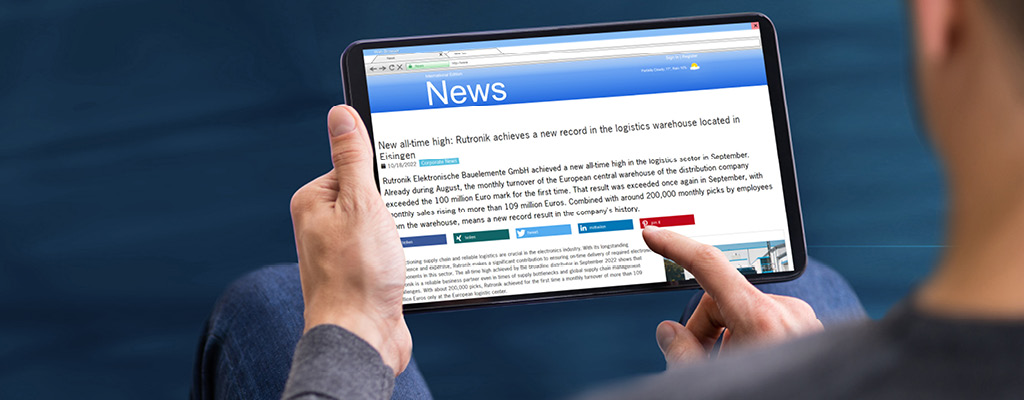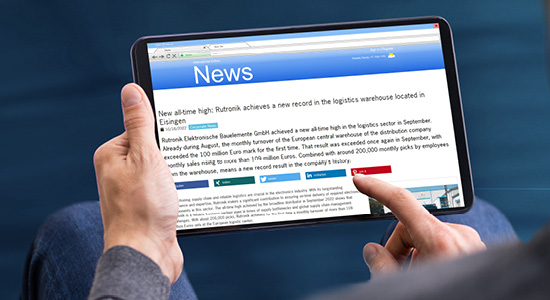Yet no two displays are the same. Different display types serve different applications. For example, it should be possible to view a thermostat display mounted on the wall of a room from all angles, while the headup display inside a car must only be able to be viewed by the driver and not the passenger. Some displays have stronger background lighting, others have none at all and operate in a purely reflective mode.
Passive and active displays
Passive displays have a special standing: Their simple control mechanisms, low installation depth and diverse technologies facilitate highly individual display solutions. They can be found both in smart watches and calculators, in simple gas and water meters as well as in industrial measuring devices, temperature displays and home appliances.
After all, passive LCDs (liquid crystal displays) result in relatively low tooling costs for a fully customized display. A reflective display can be achieved with tooling costs of around $ 2,000, for a passive display module between $ 2,000 and $ 5,000 can be expected depending on the technology and complexity. By way of comparison: For a customized active TFT (thin film transistor) display, around $ 200,000 should be set aside for tooling.
A further benefit: Passive LCDs are available as an individual solution in relatively small numbers and are thus an interesting option for smaller projects and companies.
Long-term availability
Another argument in favor of a customer-specific LCD is long-term availability. Whilst TFT standard modules are often only available for three to five years, a customized LC display remains, in theory, in production for as long as the owner of the tooling kit wishes to produce the display. Projects lasting five, ten or fifteen years are thus not out of the question.
Contrast and temperature application range
Despite these advantages, passive LCD are often not immediately considered. Yet, not every display has to be lit up, show values in color and feature touch technology for switching and zooming. Moreover, modern LCDs can offer far more than the simple 7-segment display of older calculators and the yellow-green STN (super twisted nematic) cell associated with the Game Boys from the 1990s.
Today the world of monochrome displays is vast: Vertical alignment technology, for instance, enables a super black background to be created and a 1000:1 contrast ratio guarantees a highly aesthetic display and offers space for individual design options. This technology is ideal for applications that demand wide temperature ranges and clarity of viewing from every angle.
For temperature ranges of -30°C to +80°C cell visualizations for automotive and metering applications can be achieved with ASTN (advanced super twisted nematic) which would barely be possible with a TFT display. These are possible as both segment and graphic modules.
LCDs with TN (twisted nematic), STN (super-twisted nematic) and FSTN (film STN) technology can also be tailor-made - and thus applications with a unique selling point on the market.
Five steps to a customized display
Implementation of a customized passive display is simple and comprises just five steps:
- The first step focuses on visualization: What should the display look like? What size should it be? What temperature range should the display cover? Is background lighting or a certain viewing angle required? Should the display include graphic pixels or even predefined segments? What technologies are worth considering for the application?
- Once every question has been answered and, if necessary, a layout or sketch has been completed for implementation, renowned suppliers of passive LCDs, such as Yeebo Display, Tianma Micro or U.R.T., prepare a detailed drawing of the desired display within one working week. This usually occurs after agreeing the tooling costs with the supplier.
- Once the drawing has been approved production of the release samples starts immediately. Between five and ten displays are included in the tooling costs. Depending on the level of complexity, these can take five to eight weeks to produce for reflective displays and ten to fourteen weeks for display modules.
- Based on the released displays, the supplier prepares a detailed specification which, in turn, is checked and approved along with the samples.
- Series production can then commence between 10 and 14 weeks later.
During the entire process, developers receive comprehensive support from the Rutronik Embedded Display Team. During the development phase, the team handles communication with the display supplier and coordinates all activities. Working with the customer as part of the aftersales service, Rutronik ensures a successful display tailored to the individual application.
Find components at <link www.rutronik24.com _blank external-link-new-window "open internal link">https://www.rutronik24.com/</link>


